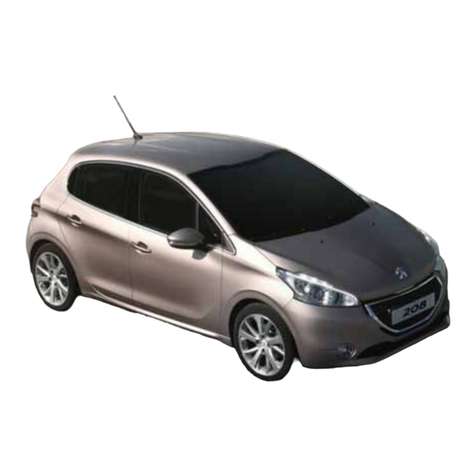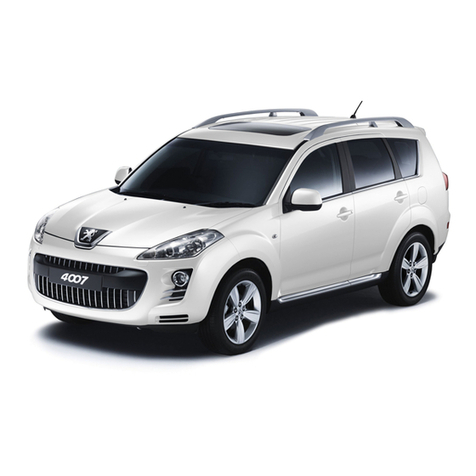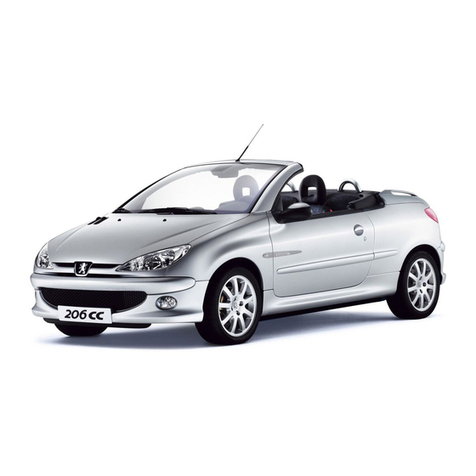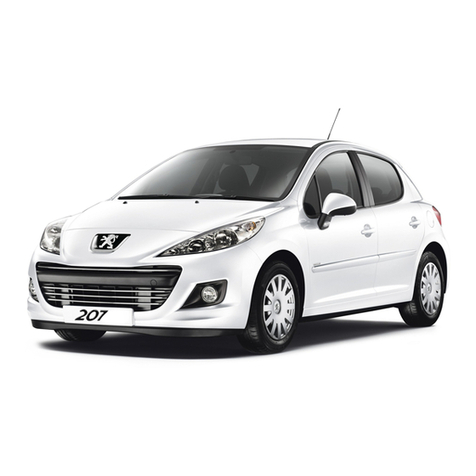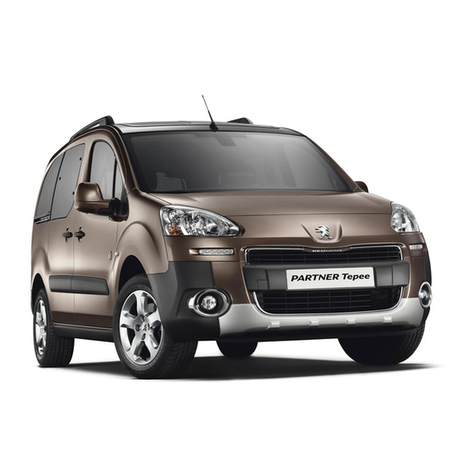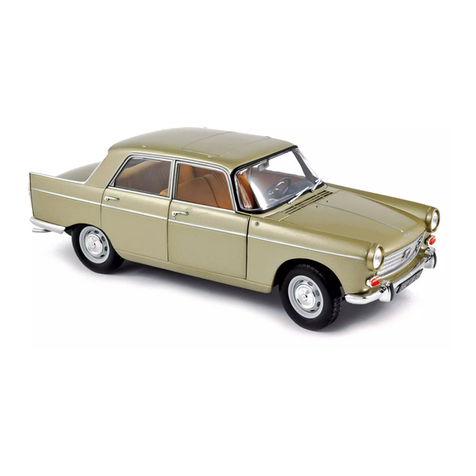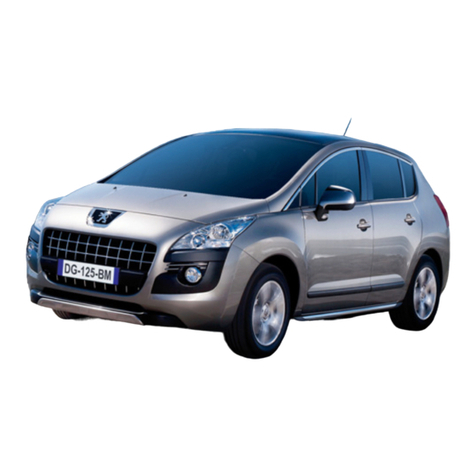YOUR AT A GLANCE
5
STARTING
STOP position:
The ignition is switched off.
1st notch, Accessories position:
The ignition is switched off but
the accessories still function.
2nd notch, Running position:
The ignition is on.
Starting position:
Operates the starter.
Starting a diesel engine
If the temperature is high
enough, the pre-heat indi-
cator light does not come
on and you can start
immediately.
If the indicator light comes on,
wait for it to go out before operat-
ing the starter.
If the engine stalls, it is neces-
sary to return the key to the
'Stop' position before re-starting.
CHECK (vehicle autotest)
Automatic check
With the ignition on (2nd notch)
If no malfunction has been
detected: In the absence of
vehicle function status indi-
cator lights, the OK light is
displayed after two seconds
on the instrument panel screen.
Otherwise, it will be displayed after
these indicator lights come on.
If a 'minor' malfunction has been
detected: the warning light for the
faulty function is displayed on the
instrument panel screen. Certain
indicator lights showing the status of
vehicle functions may also come on,
followed by the OK indicator light.
If a 'major' malfunction has been
detected: the corresponding warn-
ing light is displayed on the instru-
ment panel screen. Certain indicator
lights showing the status of vehicle
functions may also come on. The
OK indicator light does not come
on. Do not start your vehicle.
Contact a PEUGEOT dealer.
Afterwards, if the passenger airbag
is disarmed, the corresponding
warning light will come on.
With the engine running or if the
vehicle is moving, the instrument
panel screen temporarily displays:
– lights indicating warnings, when
these occur,
– vehicle function sta-
tus indicator lights,
when a change
occurs.
The display of certain indicator
lights is accompanied by an audi-
ble signal and a message on the
multi-function display.
Manual check
☞Press the "CHECK" button on the
instrument panel.
With the ignition key in the accessories
position, with the ignition switched on,
with the engine running or the vehicle
moving, this function informs you at all
times of the following:
– any current warnings,
– the status of functions which it is
possible to switch on or switch off
(windscreen wipers, automatic
switching on of lights, cruise con-
trol, disarming of passenger air
bag, etc.).
The corresponding warning lights are
displayed in succession on the instru-
ment panel screen.
If a warning or a change of status
occurs during the CHECK mode, the
corresponding indicator light(s) will be
displayed at the end of this mode.
31
Never run the engine in
a confined space.
Do not make any modi-
fications to the steering
lock.
15-07-2002




